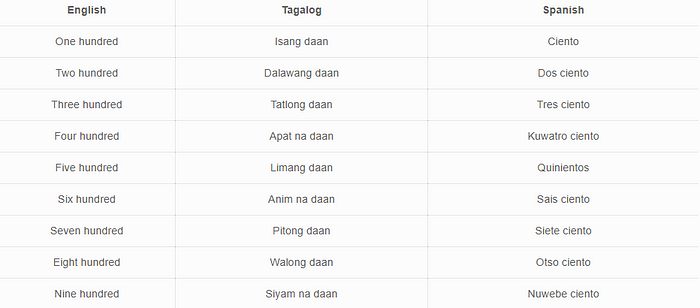Painless List of Tagalog Numbers From 0 to 1M

No matter where you are in the world, numbering and counting are deemed as two of the most basic vocabulary lessons that each person should memorize by heart. You see, the Filipino language is actually so diverse! And if you are learning Tagalog, remember that there is so much than saying good morning and thank you in the language. If you are planning to visit the Pearl of the Orient Seas, learning how to count using Tagalog numbers is one of the sure-fire ways to astound most of the locals.
As we have discussed in our handy dandy list of 500 common Tagalog phrases, the language of the Philippines is unique in the sense that it features significant connections with the Spanish language. Due to this, you might be surprised to know that the Filipinos interchangeably uses two sets of numbering systems: Tagalog and Spanish. These systems are normally used every day- when you are in the market, counting things, or even telling time.
Cardinal Tagalog Numbers
Below is an example for the first set of cardinal numbers 1–10:

Normally, the Spanish counting system is used for telling time, age, and prices of goods in “palengke” or public marketplace in English. On the other hand, Tagalog numbers are mainly used for counting things, people, money, and random objects. As a word of advice, do not that Filipinos use code-switching where L1 is Tagalog and L2 is either Spanish or English. With this being said, it might be helpful to brush up your Spanish skills too.

Luckily, learning the Tagalog language is an easy process, especially if you know English. You see, Tagalog counting follows the same pattern with English counting with orders such as ones, tens, and hundreds.

For number 20 to 99, the number system follows the general format of tens + “pu’t” + ones. Remember that if the tens’ digit ends with a vowel, it is usually followed by an “m” before the “pu’t.” Also, if there are no ones digit like for the case of 20, 30, 40, 50, and so on, no “ ’t ” is added. Take note of the examples below:

To learn to count using 30 to 90, all you have to do is change all the “dalawampu’t” in the Tagalog column for the appropriate number. The same thing is true with the Spanish variation.

For continuation, the general format followed is hundreds+ “na” or “ng” + “daan” or “raan” + “at” + the other numbers. Let us first discuss the meaning of the Tagalog signifiers in that format.

To continue our counting from 100 to 900, take note of the cardinal Tagalog numbers below:

For counting 1000 to 9000, the following vocabulary terms are used:

*Note: Colloquially, Filipinos usually say “sanlibo” instead of “isang libo” for 1000.
For counting 10,000 to 100 thousand, Tagalog speakers simply use the format below.


Ordinal Tagalog Numbers
To define a specific position in a series such as first, second, and third, we must use an ordinal number system. For Tagalog, it is quite easy to remember since all you have to do is add the word “ika” before the Tagalog cardinal numbers. Take note of the examples below:

Learning basic phrases in the Tagalog language
Tagalog is definitely a fun language to learn! To further learn Tagalog words and Tagalog phrases easily, then I recommend that you download the Ling App. The Ling App is the best companion for language enthusiasts and travelers who are challenging themselves to learn various languages. Want to establish a more meaningful relationship and connection with Filipino locals? Then I suggest you try to further practice your skills in the Philippine language through applications and actual conversations with the locals.
With your newfound vocabulary in using Tagalog numbers, you are one step closer to achieving full Tagalog fluency! Remember that the key to learning a language is time, continuous practice, and consistency. With that being said, if you want to further master the language and make meaningful connections with the Filipino people, be sure to check out the Ling App. The Ling App features fun mini-games and quizzes that can motivate you to practice and learn more about the language day by day.
